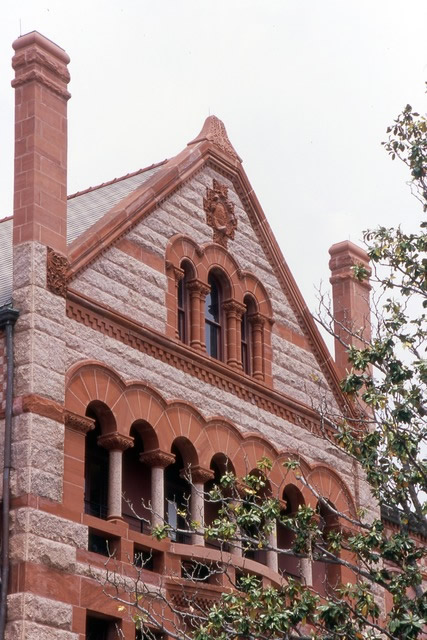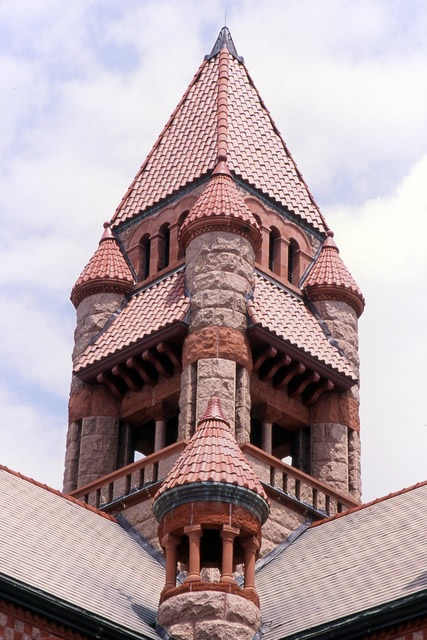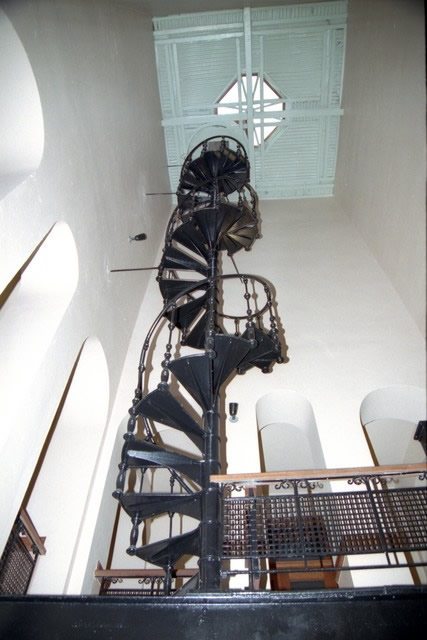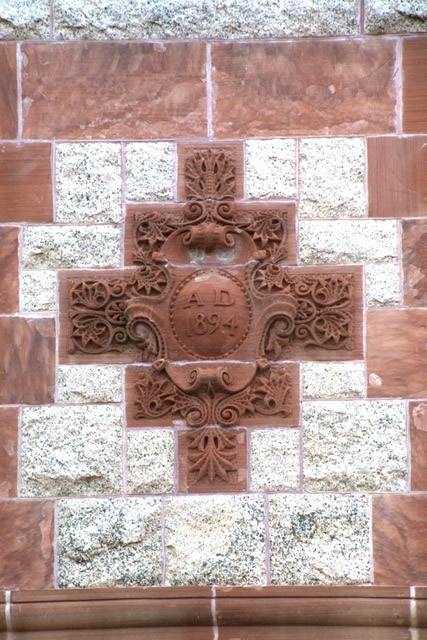|
County
- Hopkins
County Seat - Sulphur
Springs
County Population - (2000) 28,833
Hopkins County
Courthouse
Constructed 1895
Architect J. Riely Gordon
Style - Romanesque Revival
Material - Granite and sandstone
Designation National Register Listing - 1977
Texas Historic Landmark – 1975 |
Hopkins County
Courthouse as it appeared in 1939
Photo courtesy TXDoT |
Hopkins
County History
The Texas State
Legislature created Hopkins
County from land formerly in Lamar and Nacogdoches counties in
March of 1846. The county was named in honor of a prominent local
pioneer family. The original county seat of Hopkins
County was named in honor of General Edward H. Tarrant. The town
of Tarrant
was created at the geographic center of Hopkins
County as required by Texas law at that time. In 1847 a post office
was established in Tarrant.
The town of Tarrant
remained the county seat of Hopkins
County until the Post-Civil War Reconstruction period. In 1870
a special act of the Texas Legislature declared Sulphur
Springs the permanent county seat of Hopkins
County. |
A
1906 view of
the courthouse and square.
Postcard courtesy James Perkins |
Hopkins County
Courthouse and Town Square
The
town square in Sulphur
Springs is a dramatically different place. A vintage J.
Riely Gordon courthouse occupies the northeast corner of the spacious
town square. This offset location is both by choice and chance. The
previous courthouse was built on the east side of the original town
square. When that building burned down in 1894, a decision was made
to buy additional property east of the town square and build the present
day courthouse on the northeast corner of the enlarged town square.
The net result of all these events in Hopkins
County is a spacious public square with plenty of room for parking
and public gathering. Along the eastern side of the square there's
a bandstand and a small yard with trees and benches. The parking lot
and walkways on the square are paved with red bricks. This adds a
vintage feel to the place, and also creates a dramatic approach to
the county courthouse. |
 |
A close up view
of the Hopkins County Courthouse
Photo courtesy Sam
Fenstermacher, April 2004 |
| This
J. Riely Gordon courthouse has two entrances rather than four. Because
the Hopkins County courthouse sits on the northeast corner of the
town square it has entrances facing northwest and southwest. Many
other J.
Riely Gordon designed courthouses of this vintage feature four
entrances on the corners of the building. The position of the courthouse
on the square made this impractical and dictated the use of two entrances
which both faced out onto the public square. |
A face carved
in red sandstone on the south side of the courthouse.
Photo courtesy Sam
Fenstermacher, April 2004 |
| Pink
granite and red sandstone are the predominant materials used for construction
of the exterior facades. Massive Roman arched at the entrances are
topped by second-story poritcos which in turn are crowned by third-story
open porches. Just below the roof line a band of square stones of
two colors set in a checkerboard pattern adds contrast and accents
red sandstone arches above third story windows. |
 |
The
courthouse in Hopkins County is similar in many ways to all the other
county courthouses J. Riely Gordon designed for nearby Texas counties.
One notable difference is the omission of a clock in the central tower.
According to a story on the Hopkins County Texas web site (http://www.hopkinscountytx.org/history/courthouse.htm)
citizens did ask for a clock to be placed in the courthouse tower.
County officials decided a clock in the tower would be alright but
wouldn't provide funding for it. The matter was discussed avidly among
the town's people, but nothing was ever done. Hopkins County Commissioner
R. Carpenter had his own opinion about the clock and he let it be
known, "Get up at sunup; go to bed at dark, and eat when you are hungry,
and you don't need no d_ _ _ clock." |
A view from
the southwest entrance to the Hopkins County Courthouse. An enormous
old Magnolia tree cloaks the south side of the building in cool shade.
Photo courtesy Sam
Fenstermacher, April 2004 |
Soon
after you come into the courthouse through the southwest entrance
you're confronted by the huge iron door of a fireproof vault. The
door has been very skilfully striped of its many coats of old finish.
The work is interesting because it gives you a little insight into
how historians determine the original finish and markings that are
concealed under decades of paint and deterioration. Still the mammoth
old door has an unfinished appearance. A quick look around might also
reveal to you that the beautiful stone flooring around you has been
repaired rather than replaced. The color of some of the little tiles
are brighter than the bulk of the flooring.
Apparently someone decided it was far better to retain most of the
existing flooring rather than to replace it all. The vault door may
have been left unfinished for many reasons. One possible reason might
be that it didn't fit in the budget for the most recent restoration
of the building. This is all speculation, but it gives us a little
insight into how these old buildings are being restored. At some point
the general contractor doing the restoration work and the officials
of the county government have to make hard decisions about which repairs
are the most worthy. There isn't an infinite amount of money available
to complete the project. The Texas State Historical Commission will
make every effort to preserve the original features of the courthouse
unless they really don't make sense in a modern public building. Although
the final results of the restoration of the Hopkins County courthouse
are truly grand, many tough decisions and compromises were very likely
required to achieve that end.
Exposed arched corrugated iron panels form the ceiling of the first
floor. These panels fit in between iron beams and were used to support
the weight of concrete used for floors for the second story. This
construction method isn't unusual for courthouses built around this
time in Texas, but it's not common to
other J. Riely Gordon courthouse in this area of the state. Bare concrete
is used for flooring in office areas on the second and third floors
and on the exterior porticos and porches.
The District Courtroom is reminiscent of the one in the nearby Ellis
County Courthouse. The courtroom occupies one side of the building
on the second floor with additional seating in a balcony on the third
floor. This courtroom is smaller than the one in Ellis County. The
seating provided for the public is curved wooden benches. Exposed
concrete flooring is evident. Many smaller details of this room are
also reminiscent of the courtroom in Ellis County. For example, the
iron poles that support the balcony where it overhangs the main courtroom
appear to be identical to those used in Ellis County.
When comparing J. Riely Gordon courthouses it often seems to be the
case that they will be similar in many ways, but each plan has its
own unique twist. That way each county ended up with what they wanted
which was a grand courthouse like the one Gordon designed for their
neighboring county, but with enough unique features and architectural
details so that no one would ever dare call them identical. |
 |
Spiral Stair
extending from third floor to air vent in tower.
Photo courtesy Sam
Fenstermacher, April 2004 |
Like so many other J.
Riely Gordon courthouses of this vintage, a central staircase
provides transport to the upper floors of the building. This staircase
is immediately surrounded by a gallery that provides a connection
to the various offices of the building. This design produces excellent
ventilation, and ventilation was so important in Texas
before air conditioning. In the case of the Hopkins County courthouse
a hinged skylight in the tower provides a way to allow hot air to
flow out of the building.
The way to open the vent in the tower becomes apparent as you round
the last turn on the stairs heading up to the third floor. It's here
you'll come upon a black iron spiral staircase that extends up to
the skylight in the tower. This stair is quite dramatic to see as
it extends up to the center of the building a great distance above.
The dust on the stair treads suggests that these steps are rarely
used. Because of modern air conditioning, the vent is of little use.
On the other hand, the accent lights that so effectively emphasize
the black spiral stair against the solid white walls suggests that
in modern times the spiral staircase functions more as an artistic
element than as a staircase.
Before turning your attention away from the courthouse, a few additional
moments should be spent discovering the details of the courthouse's
exterior. In several places around the building the stone carvers
were apparently given a little free space to show off their best work.
In the center of the north and south sides of the building, below
small balconies, you'll find faces carved in stone. Up high on the
west side of the building the date of construction is conspicuously
encircled within an elaborately carved cartouche. |
 |
Heavily carved
cartouche showing "1894" date of construction on the west
side of the building.
Photo courtesy Sam
Fenstermacher, April 2004 |
Hopkins
County rededicated its historic courthouse
in December of 2002. More than three million dollars in restoration
work was funded through The Texas Historic Courthouse Preservation
Program. This classic J. Riely Gordon courthouse has probably never
looked better than it does now. Go see it.
Book Hotel Here > Sulphur
Springs Hotels |
More
Information
Hopkins County maintains an Official web site at – http://www.hopkinscountytx.org/.
This is a wonderful source of information about the history of the
area. Many of the dates and facts presented in this document were
gleaned from the pages of the county web site.
Bibliography:
Texas Historical Commission, Texas Historic Sites Atlas., 2004.
http://atlas.thc.state.tx.us/
2004
Copyright © Sam
Fenstermacher All rights reserved |
A
County Seat’s Troubles
by Bob Bowman
Tarrant as Hopkins County’s first seat of government, and how Sulphur
Springs became Hopkins County seat. |
Readers'
Comments:
Without hesitation, I may have had an experience with the Hopkins
County Courthouse that few others have ever had... next
page
|
|
|
